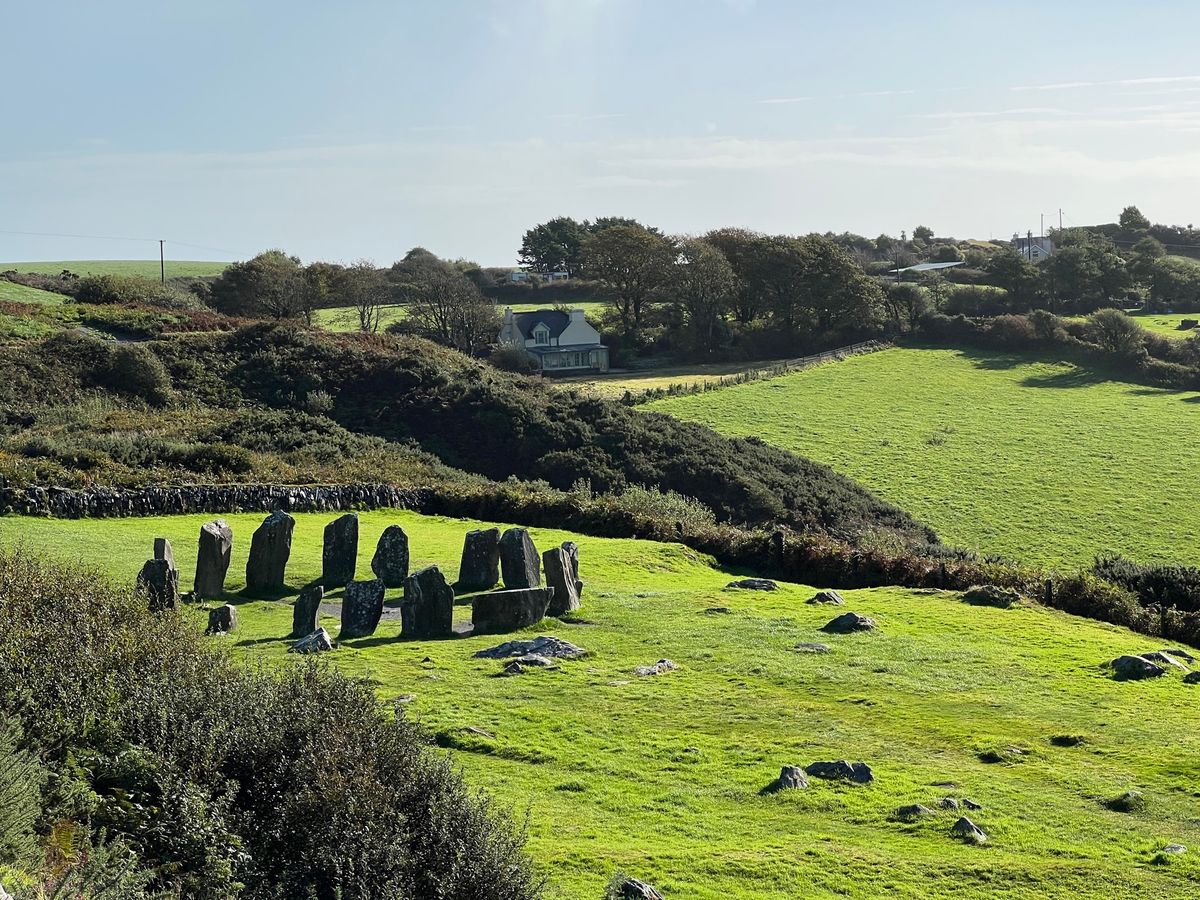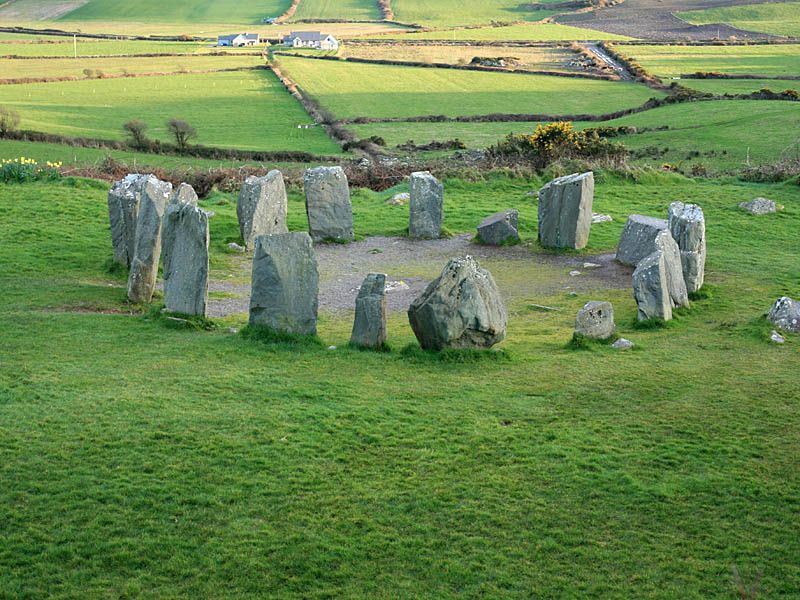About
It sometimes seems as though every stray rock in the Irish countryside has some archeological significance, but formations such as the popular Drombeg Stone Circle show that the people of megalithic Ireland were building elaborate stoneworks.
Also known as the "Druid's Altar," the circle is a megalithic formation that once consisted of 17 stones (only 13 remain) out in the countryside of Cork County, Ireland. Radiocarbon dating of human remains found at the site during a 1957 excavation suggests that the area was built and actively used between 1100-800 BC. Now the site is secluded, tucked away between verdant farmland and network of country roads.
Approaching the stone circle requires walking a short way along a gravel path among high bushes that seem to hide the circle. But then the flat expanse of land opens and the stones rise from the landscape. Visitors expecting Stonehenge should think again. The Drombeg stones are mostly less than two meters high, and the stone circle is oriented along the southwest axis to line up with the midwinter solstice.
Scattered across the nearby plain are several other relics including dwelling remains and the site of a primitive kitchen. There are also the remains of a sacred well by the pathway. Given that this is one of the most visited sites of its kind in Ireland, parts of the land have been covered by gravel to preserve the area, but those interested can walk among the rocks and even touch the sacred stones that humans have revered for thousands of years.
Related Tags
Know Before You Go
The Drombeg Stone Circle is a little over an hour from Cork, Ireland by car. No public transit access exists. Leaving Cork, take N71 southwest through Bandon and Clonakilty (approximately 55km). Turn left onto R597, and follow for 4.2km. Turn left at the sign for Drombeg Stone Circle, and follow the road approximately 1km. Turn right into the parking lot.
Community Contributors
Added By
Published
September 15, 2013



























































